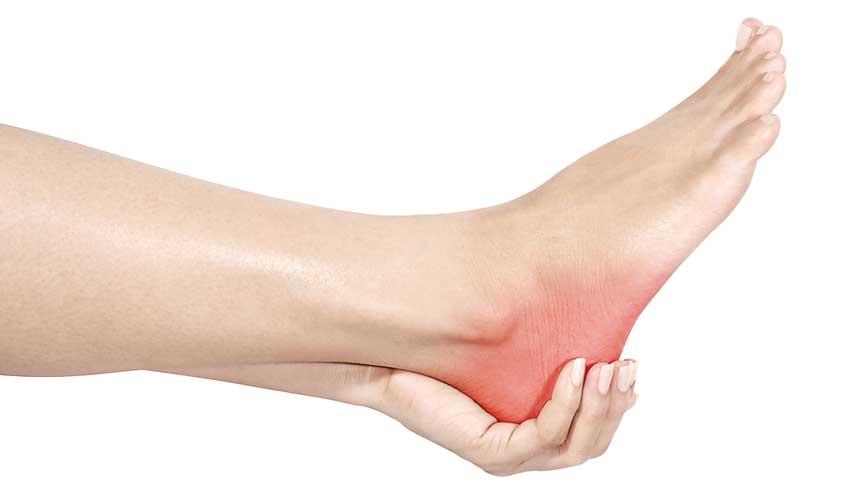Reply To:
Name - Reply Comment

 Heel pain is a frequent complaint in current society. The majority of the society have experienced this condition without having considerable relieve throughout in the past. Although, heel pain prevails in both sexes, it is present more among females. Among the many disease conditions resulting in heel pain, the more frequently experienced cause can be identified as plantar fasciitis or calcaneal spur. Vathakantaka is the most probable Ayurveda terminology which can be correlated with plantar fasciitis or calcaneal spur.
Heel pain is a frequent complaint in current society. The majority of the society have experienced this condition without having considerable relieve throughout in the past. Although, heel pain prevails in both sexes, it is present more among females. Among the many disease conditions resulting in heel pain, the more frequently experienced cause can be identified as plantar fasciitis or calcaneal spur. Vathakantaka is the most probable Ayurveda terminology which can be correlated with plantar fasciitis or calcaneal spur.
The pricking painful feeling in the heel region is similar to the pain experienced during Kantha; a thorn is the etymology behind the term Vathakantaka.
Vitiation of the Vata Dosha around the Gulpa Sandhi (Ankle joint) is the cause for arising Vathakantaka.
Chronic inflammation over the plantar fascia causes the pathogenesis of the plantar fasciitis. As per the Ayurveda concepts vitiation of Vatha Dosha is a result of inflammation. Because of the poor digestive and metabolic functions, Kapha Dosha also influence the pathogenesis of Vathakantaka. Ayurveda medical discipline describes Vathakantaka as a disease involving with the tissues of Snayu (Nerves, ligaments and tendons), asthi (bones), sandhi (joints). By considering all these facts and the similarity of the clinical features plantar fasciitis or calcaneal spur offer the most probable correlation for easy understanding of Vathakantaka. The disease can be diagnosed by proper physical examination and a peep into its history. In some instances there is a need for medical imagination.
Improper positioning of the foot when walking, walking or standing in uneven surfaces, excessive walking, continuous pressure over the heel region, walking or standing on rough surfaces and an injury to the foot are the recent causes for the Vathakantaka. Other than these, overweight and obesity have their influences on Vathakantaka; specially in females.
Inclination towards high heel wearing, hard footwear, improperly fitting footwear, engaging in strenuous exercise such as running, jumping, standing for prolonged periods are the risk factors for this ailment.
Pain experienced over the heel area is attributed to the Vathakantaka. Specially if the pain aggravates in the morning there is constant immobility for hours. It brings severe pain in the morning or following inactivity during the day. This is a major sign of Vathakantaka. This pain is worse when there is pressure on the heel, walking barefoot, standing for long and walking too far. On examination there is tenderness on palpation.
Stiffness (Sthabdatha) specially in the morning, restricted movement in the ankle joint region and swelling are also found as the signs and symptoms related to Vathakantaka.
Ayurveda medicine offers ans efficient line of treatment for this disease condition. Both internal and external treatment modalities are recommended for this condition. External oileation, Swedana (Fomentation) specially Ishthika Sweda and Waluka Sweda, Upanaha (poultice), Unmardana, Rakthamokshana (blood letting therapy), Suchi karma, Bandhana and Agni karma are practised as external therapies. Decoctions, pills and other oral medicines which are applied to pacifying Vatha Dosha and counter the cycle of eteopathogenesis in Vathakantaka are applied to cure the disease. If the causative factors and risk factors are prevented by applying suitable lifestyle modifications and treatment modalities are started at the right time of the day today. By doing so Vathakantaka can be easily avoided.
(The writer is a BAMS (Hons.) graduate from the University of Colombo)